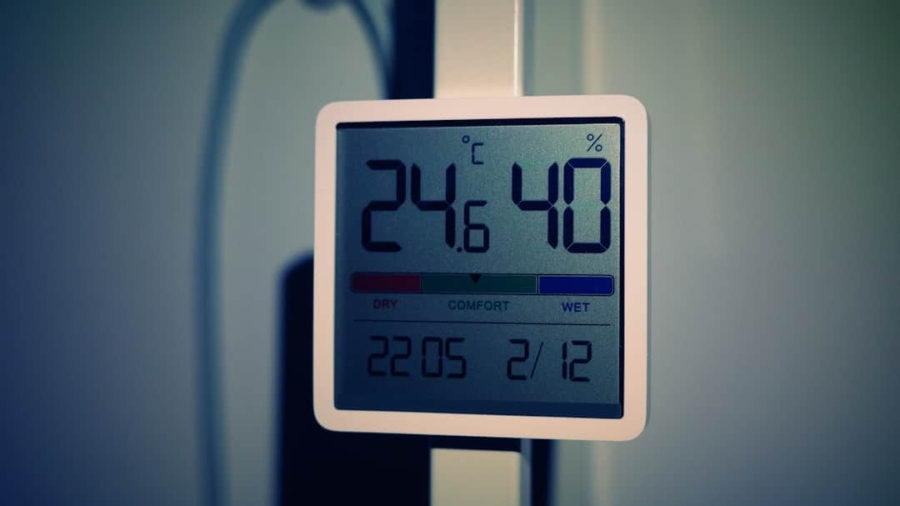In recent years, the concept of climate-adaptive smart homes has gained significant traction as a response to the escalating challenges posed by climate change. As extreme weather events become more frequent and unpredictable, homeowners are increasingly seeking solutions that not only enhance comfort but also promote sustainability. Climate-adaptive smart homes are designed to respond dynamically to environmental conditions, utilizing advanced technologies to optimize energy use and maintain indoor climate stability.
This shift is not merely a trend; it represents a fundamental change in how we think about residential living in the face of a warming planet. The rise of climate-adaptive smart homes can be attributed to several factors, including technological advancements, increased awareness of environmental issues, and the growing demand for energy-efficient solutions. Innovations in sensors, automation, and data analytics have made it possible for homes to monitor and respond to external conditions in real-time.
This proactive approach not only enhances comfort but also reduces energy consumption, making these homes an attractive option for environmentally conscious consumers.
Key Takeaways
- Climate-adaptive smart homes are on the rise, offering innovative solutions to address the challenges of climate change.
- These homes work by integrating advanced technology and sensors to monitor and adjust to environmental conditions, ensuring optimal comfort and energy efficiency.
- The benefits of climate-adaptive smart homes include improved energy efficiency, reduced environmental impact, and enhanced comfort and convenience for homeowners.
- However, challenges and limitations such as high initial costs and potential privacy concerns need to be addressed for widespread adoption of these homes.
- Innovations in climate-adaptive smart home technology, including the use of AI, are driving the development of more advanced and effective solutions for climate resilience.
How Climate-Adaptive Smart Homes Work
At the core of climate-adaptive smart homes is a sophisticated network of sensors and devices that continuously monitor both internal and external environmental conditions. These homes are equipped with various technologies, including temperature sensors, humidity detectors, and air quality monitors, which gather data to inform the home’s systems.
This level of responsiveness is crucial for adapting to the unpredictable nature of climate change. Moreover, climate-adaptive smart homes often integrate renewable energy sources, such as solar panels, which further enhance their sustainability. These homes can harness solar energy during the day and store it for use during peak demand times or when sunlight is not available.
By intelligently managing energy consumption and production, these systems can significantly reduce reliance on fossil fuels and lower utility bills. Additionally, many smart home systems are designed to communicate with each other, creating a cohesive ecosystem that optimizes energy use across various devices. For instance, when the home detects that no one is present, it can automatically lower heating or cooling settings to conserve energy.
Benefits of Climate-Adaptive Smart Homes

The benefits of climate-adaptive smart homes extend beyond mere convenience; they encompass economic, environmental, and health advantages as well. One of the most significant benefits is energy efficiency. By utilizing real-time data to adjust energy consumption based on current conditions, these homes can drastically reduce energy waste.
According to the U.S. Department of Energy, smart home technologies can lead to energy savings of up to 30%. This reduction not only translates into lower utility bills for homeowners but also contributes to a decrease in overall greenhouse gas emissions.
In addition to energy savings, climate-adaptive smart homes can enhance indoor air quality and overall health. Many systems are equipped with advanced air filtration technologies that monitor and improve air quality by removing pollutants and allergens. For instance, smart ventilation systems can adjust airflow based on indoor air quality readings, ensuring that fresh air circulates throughout the home while minimizing energy loss.
This focus on health is particularly important as more people become aware of the impact of indoor environments on well-being, especially in light of recent global health crises.
Challenges and Limitations of Climate-Adaptive Smart Homes
Despite their numerous advantages, climate-adaptive smart homes face several challenges and limitations that must be addressed for widespread adoption. One significant barrier is the initial cost associated with implementing these technologies. While long-term savings on energy bills can offset these costs, the upfront investment can be prohibitive for many homeowners.
The price of smart devices, installation fees, and potential retrofitting of existing homes can deter individuals from making the switch to a climate-adaptive system. Another challenge lies in the complexity of integrating various technologies into a cohesive system. Homeowners may find it daunting to navigate the myriad options available in the market, leading to confusion about which devices are compatible or most effective for their specific needs.
Additionally, concerns about cybersecurity and data privacy are paramount as more devices become interconnected. The potential for hacking or unauthorized access to personal data raises valid apprehensions among consumers, which could hinder the adoption of smart home technologies.
Innovations in Climate-Adaptive Smart Home Technology
The landscape of climate-adaptive smart home technology is continually evolving, driven by innovation and research aimed at enhancing functionality and user experience. One notable advancement is the development of machine learning algorithms that enable smart home systems to learn from user behavior over time. These algorithms analyze patterns in energy usage and environmental conditions to optimize settings automatically without requiring constant user input.
For example, a smart thermostat might learn when occupants typically leave for work and adjust heating or cooling accordingly. Another exciting innovation is the integration of blockchain technology into smart home systems. Blockchain can provide a secure method for managing transactions related to energy consumption and production, particularly in homes equipped with solar panels or other renewable energy sources.
By enabling peer-to-peer energy trading among neighbors, homeowners can sell excess energy back to the grid or share it with others in their community. This not only promotes sustainability but also fosters a sense of community engagement around energy use.
The Role of Artificial Intelligence in Climate-Adaptive Smart Homes

Artificial intelligence (AI) plays a pivotal role in enhancing the capabilities of climate-adaptive smart homes. AI algorithms can process vast amounts of data from various sensors and devices to make informed decisions about energy management and environmental control. For instance, AI can predict future energy needs based on historical usage patterns and external weather forecasts, allowing homeowners to optimize their energy consumption proactively.
Moreover, AI-driven virtual assistants are becoming increasingly common in smart homes, providing users with intuitive control over their environments. These assistants can respond to voice commands or mobile app inputs to adjust lighting, temperature, or security settings based on user preferences. The integration of AI not only simplifies user interaction but also enhances the overall efficiency of climate-adaptive systems by ensuring that they operate at peak performance levels.
The Impact of Climate-Adaptive Smart Homes on Energy Efficiency
The impact of climate-adaptive smart homes on energy efficiency is profound and multifaceted. By leveraging real-time data and advanced technologies, these homes can significantly reduce energy consumption while maintaining comfort levels for occupants. For example, smart lighting systems equipped with motion sensors can automatically turn off lights in unoccupied rooms, minimizing unnecessary electricity use.
Similarly, smart irrigation systems can adjust watering schedules based on weather conditions, conserving water resources while maintaining healthy landscapes. Furthermore, the integration of renewable energy sources into climate-adaptive homes amplifies their positive impact on energy efficiency. Homes equipped with solar panels can generate their own electricity, reducing reliance on grid power during peak hours when demand is highest.
This not only lowers utility costs but also contributes to a more sustainable energy landscape by decreasing dependence on fossil fuels. As more homeowners adopt these technologies, the cumulative effect could lead to significant reductions in overall energy consumption at a community or even national level.
The Future of Climate-Adaptive Smart Homes: Opportunities and Considerations
Looking ahead, the future of climate-adaptive smart homes presents numerous opportunities for innovation and growth within the housing market. As awareness of climate change continues to rise, consumers are likely to prioritize sustainability when making housing decisions. This shift could drive demand for climate-adaptive technologies and encourage manufacturers to invest in research and development aimed at improving efficiency and affordability.
However, several considerations must be addressed to ensure that these advancements benefit all segments of society equitably. Policymakers will need to create incentives for homeowners to adopt climate-adaptive technologies while also addressing barriers related to cost and accessibility. Additionally, education and outreach efforts will be essential in helping consumers understand the benefits and functionalities of these systems.
As we move toward a future where climate-adaptive smart homes become increasingly prevalent, collaboration among technology developers, policymakers, and consumers will be crucial in shaping a sustainable living environment that meets the challenges posed by climate change head-on. The potential for innovation is vast; however, it must be harnessed thoughtfully to create resilient communities capable of thriving in an uncertain future.
In a related article on ENICOMP, “RankAtom Review: The Game-Changing Keyword Research Tool,” explores how digital marketers can utilize innovative tools to enhance their SEO strategies and improve online visibility. This article delves into the features and benefits of RankAtom, a powerful keyword research tool that can revolutionize the way businesses approach search engine optimization. By leveraging cutting-edge technology like RankAtom, companies can stay ahead of the competition and reach their target audience more effectively. For more information on digital tools and technology trends, check out this article.
FAQs
What are climate-adaptive smart homes?
Climate-adaptive smart homes are residences equipped with advanced technology that allows them to automatically adjust to changing environmental conditions, such as temperature, humidity, and air quality. These homes use sensors, smart devices, and automation systems to optimize energy efficiency and create a comfortable living environment.
How do climate-adaptive smart homes help mitigate climate change?
Climate-adaptive smart homes help mitigate climate change by reducing energy consumption and carbon emissions. By optimizing heating, cooling, and lighting systems, these homes minimize their environmental impact and contribute to overall energy conservation efforts.
What are the key features of climate-adaptive smart homes?
Key features of climate-adaptive smart homes include smart thermostats, automated shading systems, energy-efficient appliances, air quality monitoring, and water conservation technologies. These features work together to create a sustainable and comfortable living environment while minimizing energy usage.
How do climate-adaptive smart homes improve quality of life?
Climate-adaptive smart homes improve quality of life by providing a more comfortable and healthy living environment. By regulating temperature, humidity, and air quality, these homes can enhance occupant comfort and well-being. Additionally, they can help reduce utility costs and provide peace of mind through remote monitoring and control capabilities.
What is the future outlook for climate-adaptive smart homes?
The future outlook for climate-adaptive smart homes is promising, with continued advancements in technology and increased adoption of sustainable building practices. As awareness of climate change grows, there is a growing demand for energy-efficient and environmentally friendly housing solutions, making climate-adaptive smart homes an increasingly important part of the future of residential living.

